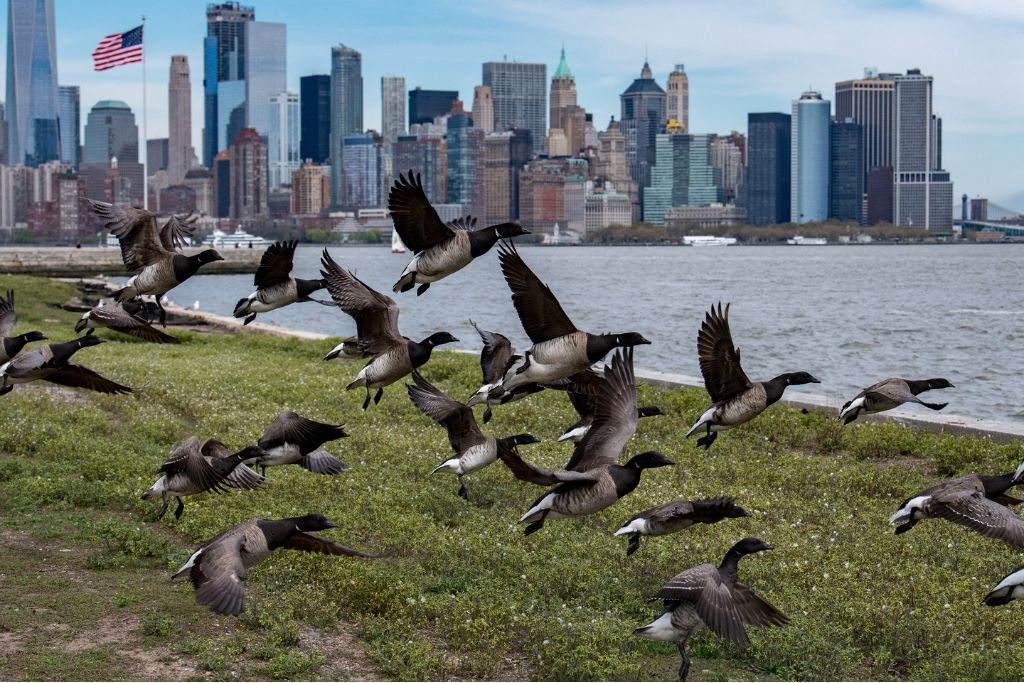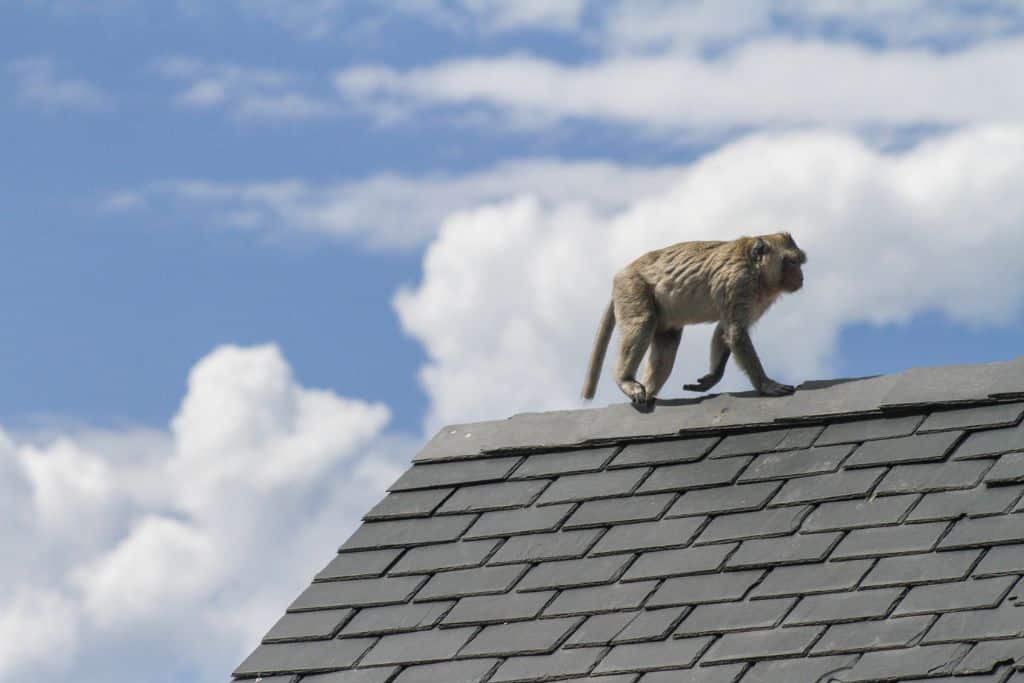When talking about urban wildlife, we refer to animals that live and thrive in human-dominated ecosystems. With a growing number of species being affected by climate change amid an ever-expanding urban landscape, the incoming of wildlife to the city will soon become an inevitable phenomenon. To better accommodate animals in an anthropogenic environment, we need to further study and investigate the demography and interactions of urban wildlife with the help of urban biologists and scientists alike.
—
Walking around the streets of Hong Kong, it is not uncommon to find all kinds of wild animals sharing the same urban space with people: the flock of pigeons bobbing their heads outside MTR stations, greeting a busy crowd of people in the morning; a tiny sparrow leaping around the outdoor restaurant table in search of fallen pieces of food; the loner rat silently running across the dark alley in the middle of the night; or even the wild boar family wandering in the bushes for a lovely outing between the mother and her children.
The fact that animals are navigating the city almost as easily as people – for whom the city is built – may feel like a threat or a blessing at times, knowing that the integration of wildlife into the human world is somewhat inevitable since the expansion of urban conglomerates in the last two centuries. But why do animals decide to move away from the natural world and to concrete jungles? How do they adapt to the urban environment that is so much different from their original habitats?
Defining Urban Wildlife
“Urban wildlife” is a term used to describe animals that have adapted their lifestyle to living in the cities and suburban areas. Despite the early efforts of humans to rid the city of wild animals, they eventually returned and blended into urban life almost seamlessly. This is largely due to the later decision of people to plant trees, establish parks, and improve public hygiene in the city – for the health and economic benefits of, unsurprisingly, human beings themselves. These urban interventions introduced a more ideal living environment for both animals and people. The destruction of forests and nature following the process of industrialisation and urbanisation also played a key role in forcing animals to abandon their natural habitats and turn to city life for their survival.
However, the theory of evolution by Charles Darwin from the 19th century has told us that adaptation, whether behavioural or biological, is a hideously slow process that takes generations for the changes to finally be observed. Then how do we account for the seemingly quick adaptations of wild animals in the city, sometimes even happening within a human lifetime?
How Do Animals Thrive in Urban Settings?
It turns out that some animals, especially small ones, are more flexible than we think in terms of their ability to evolve and adapt to their changing environment. Most of the time, these behavioural and biological changes are induced by human factors such as the introduction of man-made infrastructure and the “unnatural” urban way of living. Scientists call this the HIREC – or human-induced rapid evolutionary change – to highlight the impacts human beings have on animals by creating an extreme ecological and habitual situation that often means either life or death for the entire species. Generally speaking, small animals are more likely to live in cities because they only need little space and not much food to survive. It is also observed that evolution tends to happen more frequently for animals with smaller body sizes due to their shorter life span and a greater number of offspring per pregnancy that allow for faster genetic mutations.

With shrinking availability of natural habitats, wild animals are turning towards the city for their new living space.
In fact, there are different examples of fast evolution in animals worldwide. Crested anoles, a lizard species native to Puerto Rico, have evolved to have bigger toe pads. These allow them to better handle smooth surfaces, such as glass windows and painted concrete. The species is known for its skill in climbing trees because of its toe pads coated in scales called lamellae, which are the reason for its strong grip. Meanwhile, scientists found that the white-footed mice in New York have genetically evolved to better digest human diets like pizza and fast food. The change may also be due to a difference in the availability of certain plants and insects in the city. Sometimes, new species even emerged from a drastic change in the living environment. The culex pipiens molestus, for instance, is a new species of mosquito that live in man-made underground spaces and feed on human blood. Their ancestor, however, is the culex pipiens – a common kind of mosquito that lives above ground and feeds only on birds.
Can the Urban Wildlife Phenomenon Prevent All Species From Going Extinct?
Although there is an increasing number of examples showing rapid, human-induced evolutionary change, for most other animals, evolution still takes a long period of time and may not be fast enough to prevent them from going extinct. Another problem is that by including wild animals in the city, incidents of human-wildlife conflict may happen more frequently and create tension between people and animals. For example, the prolonged wildfires in California in 2021 had driven coyotes to the suburban neighbourhood who were later found to be preying on the residents’ pets. In Hong Kong, there are also cases of monkeys stealing from or attacking humans for their food in areas near the country parks where they dwell in. To avoid such conflicts, we need to investigate the ecological function of the city and how it impacts the survival of wildlife within and beyond the urban environment.
The need to monitor the urban ecosystem is not purely a preparatory but an urgent reaction to the growing number of wild animals in the city. With the consequences of climate change worsening tenfold this year, animals are inevitably forced to migrate to urban areas due to their habitats being destroyed by rising sea levels, prolonged wildfires, or deforestation. According to a study done in 2015, there are more threatened species found in the city than in rural areas per square kilometre. It turns out the city provides an ideal and favourable environment for many animals to thrive as there is an abundance of food sources and shelters to avoid larger predators.
To preserve the biodiversity of our planet, we should promote a wildlife-friendly environment in the city while simultaneously working to protect the natural areas for those who cannot adapt to the man-made landscape. Much research is still needed to better understand the behaviour and demography of urban wildlife as well as their interactions and movements of migration. Meanwhile, the government should collaborate with urban biologists to revise or reexamine the existing urban landscape to accommodate the need of urban wildlife, such as through developing public parks and open spaces which can function as an intermediate zone for animals to navigate the city. Together with an expansion of natural protected areas, people can be better connected with nature and hopefully more tolerant when they encounter wild animals. All of these efforts serve to minimise the conflict between humans and wildlife so that a future can be guaranteed for animals despite a collapsing ecosystem in our shared world.
You might also like: The Remarkable Benefits of Biodiversity

















